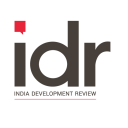Think risk
While most philanthropists agree with that sentiment, it does not necessarily reflect in their philosophy of giving nor in the way they manage risk for themselves and their portfolio. There are different kinds of risks involved in grant-making – financial, reputational, and impact.If donors are to see themselves as partners in change, then identifying and mitigating these risks must be central to the conversation. And sustainability, resilience, and network-building are all critical and interlinked elements of this conversation.
Think sustainability–a bit differently though
Every donor is concerned with the sustainability and longevity of the work they fund. Likewise, for nonprofits, expanding their donor base is a priority.The traditional approach has been to target a few high value donors rather than build a network of many small donors. And understandably so. The effort and capacity required to do the latter is very different from what is required to unlock institutional or philanthropic capital.
 Nonprofits must actively diversify their funding bases and look beyond ‘large’ ticket sizes.While this might be seen as a choice or a trade-off, we believe that this is better understood as a continuum that nonprofits ought to progress along and something that philanthropy ought to acknowledge, support and accelerate.
Nonprofits must actively diversify their funding bases and look beyond ‘large’ ticket sizes.While this might be seen as a choice or a trade-off, we believe that this is better understood as a continuum that nonprofits ought to progress along and something that philanthropy ought to acknowledge, support and accelerate.
Funds from foundations, corporates and high net worth individuals will continue to feature as substantial components of an organisation’s budget.
But we also believe that nonprofits must actively diversify their funding bases and look beyond ‘large’ ticket sizes.
Advantage crowdfunding
An increasingly popular yet under-utilised model is one that leverages crowdfunding. There are multiple approaches to crowdfunding from creating one’s own giving platform as Pratham Books did with Donate-A-Book, to utilising existing platforms like Bitgiving and Ketto.
This idea, of creating a large network of small donors via a platform, is one we think has tremendous possibility and lends value to an organisation beyond just fundraising.
It de-risks the model
A diversified portfolio that balances foundation and crowdfunded support offers nonprofits in your portfolio resilience of two kinds.
- Funding resilience because it is de-risked from single points of failure–from changes in donor priorities to the regulatory.
- Insurance against operational risks: Building a large support base comprising many individuals enables nonprofits to create a community that supports their work and their mission.
Allows for innovation
Very often, traditional funding is tied to programmatic work or has limited headroom for people and experimentation costs. As a result, grantee organisations are constrained in their attempts to prototype, iterate and experiment with new models of change and impact.
Unconditional capital from crowdfunded sources could serve as a vital source of money for them to learn and experiment with new opportunities for impact.
Crowd funding from hundreds of individuals also pushes nonprofits to improve their storytelling around their impact to engage this retail donor base. This has tremendous value beyond just the organisation as it creates new conversations and narratives for the sector as a whole.
Beyond risk
For philanthropists, there are other good reasons why you ought to consider supporting these newer models of fundraising.
- Crowdfunding can unlock further philanthropic capital for your grantees as it builds credibility for the work, the organisation and the sector among significantly larger groups of people.
- It also allows for varied funding engagements with nonprofits at different ticket sizes and through multiple lenses of programs, functions and issues, rather than only through the entirety of a nonprofit’s work or theory of change.
Fund it
There are many ways in which philanthropists can support this shift. You can start by recognising the importance of it and seeding the idea within your portfolios. Once this conversation starts, you can help in the following ways:
- Support the costs for creating the capacity within your grantees to tell their stories of change to large audiences who have limited knowledge of the issue and short attention spans.
- Nudge nonprofits to experiment with it by moving a small percentage of their philanthropic funding to matching grants against monies raised through crowdfunding,
- Underwrite the costs of implementation either in the form of the fees that existing platforms charge or, in some cases, for creating new crowdfunding platforms.
- Provide the initial few grants to crowdfunding campaigns to create a signalling effect of trust.
Philanthropists can support this shift to crowdfunding. It is still early days for crowdfunding in India. There is a tremendous sense of possibility and a large upside in supporting this gradual shift for organisations, donors and for the sector at large.
Early adopters of these models will have a first mover advantage and this is why we advocate the time for donors to support this is now.
Gautam John is the Director of Strategy at Nilekani Philanthropies.
This article originally appeared on the Indian Development Review on 17 August 2017. The original article can be found here.



 Nonprofits must actively diversify their funding bases and look beyond ‘large’ ticket sizes.
Nonprofits must actively diversify their funding bases and look beyond ‘large’ ticket sizes.


Comments (0)